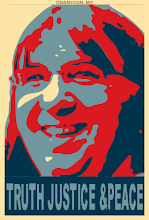Swing Shift
This is a fascinating study in many ways regarding the religious preferences of Americans.
The NYTimes reports on a Pew study on faith, Americans Change Faiths at Rising Rate, Report Finds:
More than a quarter of adult Americans have left the faith of their childhood to join another religion or no religion, according to a new survey of religious affiliation by the Pew Forum on Religion and Public Life.So, maybe we can form an "ex" religion for the those people formerly known as Catholic. It would be a larger group than the total of many other religions, such as Buddhist, Muslin or Jewish, which are all in the 1-2% range.The report, titled “U.S. Religious Landscape Survey,” depicts a highly fluid and diverse national religious life. If shifts among Protestant denominations are included, then it appears that 44 percent of Americans have switched religious affiliations.
For at least a generation, scholars have noted that more Americans are moving among faiths, as denominational loyalty erodes. But the survey, based on interviews with more than 35,000 Americans, offers one of the clearest views yet of that trend, scholars said. The United States Census does not track religious affiliation.
The report shows, for example, that every religion is losing and gaining members, but that the Roman Catholic Church “has experienced the greatest net losses as a result of affiliation changes.” The survey also indicates that the group that had the greatest net gain was the unaffiliated. More than 16 percent of American adults say they are not part of any organized faith, which makes the unaffiliated the country’s fourth largest “religious group.”
* * * *
In the 1980s, the General Social Survey by the National Opinion Research Center indicated that from 5 percent to 8 percent of the population described itself as unaffiliated with a particular religion.
In the Pew survey 7.3 percent of the adult population said they were unaffiliated with a faith as children. That segment increases to 16.1 percent of the population in adulthood, the survey found.* * * *While the unaffiliated have been growing, Protestantism has been declining, the survey found. In the 1970s, Protestants accounted for about two-thirds of the population. The Pew survey found they now make up about 51 percent. Evangelical Christians account for a slim majority of Protestants, and those who leave one evangelical denomination usually move to another, rather than to mainline churches.
To Prof. Stephen Prothero, large numbers of Americans leaving organized religion and large numbers still embracing the fervor of evangelical Christianity point to the same desires.
“The trend is toward more personal religion, and evangelicals offer that,” said Mr. Prothero, chairman of the religion department at Boston University, who explained that evangelical churches tailor many of their activities for youth. “Those losing out are offering impersonal religion and those winning are offering a smaller scale: mega-churches succeed not because they are mega but because they have smaller ministries inside.”
The percentage of Catholics in the American population has held steady for decades at about 25 percent. But that masks a precipitous decline in native-born Catholics. The proportion has been bolstered by the large influx of Catholic immigrants, mostly from Latin America, the survey found.
The Catholic Church has lost more adherents than any other group: about one-third of respondents raised Catholic said they no longer identified as such. Based on the data, the survey showed, “this means that roughly 10 percent of all Americans are former Catholics.”
Similarly, even among Protestants, there is a reluctance to commit, as was noted in Survey: U.S. religious landscape in flux:
Many Americans have vague denominational ties at best. People who call themselves "just a Protestant," in fact, account for nearly 10 percent of all Protestants.However, what is most interesting about the study is the fact that "unaffiliated" or no religious preference is growing -- at the same time that the extreme religious right is trying to impose the equivalent of governmental sanctioned religion.
Based upon the clear trends, at some point, no religion will be the majority non-religion and perhaps we could then again adopt the separation of Church and State as the law of the land. What a concept that would be.
UPDATE (2/26): For a chart showing the prominence of "None of the Above" as a religious choice, see Pew Forum on Religion & Public Life, which shows that Unaffiliated is the 4th choice (with 16.1%), after Evangelicals at 26.3%, Catholics at 23.9% and Mainline Protestants at 18.1%. Of course, when you consider that the Evangelicals comprise over a dozen different denominations (most of which only garner somewhere between 1-2%), it would seem that their influence should necessarily be diluted. After all, they can't speak with one voice, can they?
NPR's Morning Edition also carried a segment on the study this morning, Religion Survey Finds Many Americans Swap Faiths.

No comments:
Post a Comment